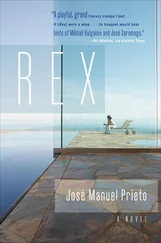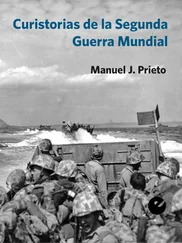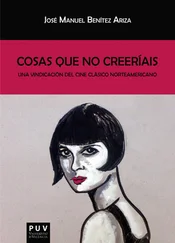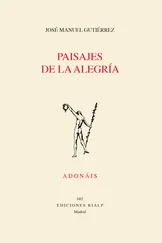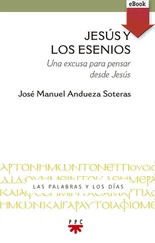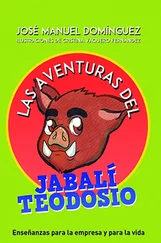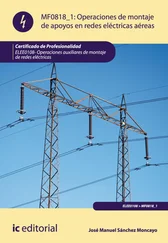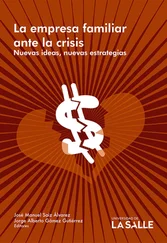Other sources: 1) Cristo in scurto , Andrea Mantegna, 1480; 2) Danaë, Gustav KLIMT, 1907.
CZARS (TWILIGHT OF THE). In a Saint Petersburg antique shop I discovered an old photo album and spent half an hour examining it in minute detail. It opened with a postcard bearing an image in sharp focus of a woman who, to judge by her dreamy air, had gone out shopping that morning, more than seventy years earlier. An annotation on the back was written in Roman characters, “Vera Vasilievna, 1907,” and when I had managed to decipher this, it left me pensive, uncertain of having understood correctly. In the dead language of the first IMPERIUM, those words may have meant something else, may have possessed a significance different from the one we attribute them today. Clumsily translated into modern Russian, they emerged, dragging along the blue-green algae of a past that was hard to imagine. (How many Veras had I met, irrelevant, insipid Veras, not one among them capable of carrying a parasol with this woman’s grace?) And the photo’s Saint Petersburg was gleaming and resplendent. Vera Vasilievna (I decided it was a woman’s name, this woman’s name) had stopped at the edge of the sidewalk and a crosshatched sea of paving stones, gleaming like fish, opened out at her feet. Their wet twinkle reflected the woman’s white form, and since I happened to be in Russia (that narrow, poorly ventilated store, the vibration of the tramway on the bridge, the red sun of the north) I thought of the specular image of its Byzantine temples built next to lakes, and also, of course, of the Grad Kitezh, the submerged city of Russian legend. (On the banks of Lake B, the reflection’s inverted temple, A1, seems more real than Temple A, which rises in the air. If we listen closely we can hear bells ringing, the sound dulled and condensed by the water’s mass. A grad where a perfectly coherent subaqueous life goes on: muzhiks sharpening their knives in the marketplace, the assembly of boyars [боярин] plotting the czar’s death.)
The old Saint Petersburg, which had also sunk beneath the waters, threw off faint sparks from the depths of that yellowing postcard: the endless double row of buttons on V.V.’s dress, her starched collar, the fine lambskin of the gloves she clutched in one fist. Standing there on the edge of that sidewalk, V.V. had all the presence of an idol sculpted in metal, the full support of the strong wind that ruffled her bronze garments. The message transmitted by her figure was, nevertheless, one of petit bourgeois warmth, a life lived frivolously, and the picture could be broken down into the following primary elements, or rather was the point of vector convergence for the following weak forces: a) the Czar, who was perfectly cast in his role as the last monarch, an individual who disbelieved in the throne (the transition from His Imperial Majesty Nicholas II to simple Nikolay Alexandrovich Romanov seems to have caused little pain to the former Emperor of Russia and even afforded him more time to lavish the pages of his diary with mundane jottings); b) the triumphal apotheosis of Diaghalev’s Ballets Russes in Paris, the black shadow of V.V.’s beautiful hat prefigured in Bakst’s daring set design for L’aprés-midi d’un faune, which also derived its effects from great swaths of darkness; c) the sky blue background of La Musique and La Danse, the two great canvases by Matisse that adorned the mansion owned by the celebrated patron of the arts Sergei: Shchukin (that photo album also contained a picture of a male in his forties with abundant sideburns and an old portable Kodak in his hands, a vacant figure, devoid of any inscription on the back into which I could pour my concept of an eminent industrialist); d) the lovely Art Nouveau chalet Chekhov built in YALTA in 1899, to die there eight years later, and the equally wondrous edifice I discovered one afternoon while strolling along a Saint Petersburg canal; e) the following VERSES by Gumilev, the “decadent” poet who died before a firing squad in 1921: Hay más tristeza hoy en tu mirada,y son más tenues los brazos que ciñen tus rodillas.Today the sadness in your eyes has grown,And your arms, wrapped round your knees, are thinner.
Vera Vasilievna, or the woman in the photo, was very beautiful and for a moment I thought she might be Áнна Ахмáтова, Anna Andreyevna (Akhmatova) herself. What’s more, an advertisement in the store window behind her featured a gigantic pencil that might be taken to suggest the woman’s profession, her relationship to the world of letters. Couldn’t the initials V.V., for Vera Vasilievna, be a key that we should invert to read A.A. (Anna Andreyevna), the specular image, the Grad Kitezh, the Saint Petersburg that lies beneath the waters?
Before leaving the store, I acquired a lovely lorgnette that Nabokov, in Speak, Memory, had given up for lost. (Says Nabokov: That lorgnette I found afterward in the hands of Madame Bovary, and later Anna Karenin had it, and then it passed into the possession of Chekhov’s Lady with the Lapdog and was lost by her on the pier at YALTA. ) But I found it there amid the jumble of history. There can be no doubt that by 1907—the year of the postcard — such lorgnettes were long out of style. This one might have had a place in V.V.’s parlor, displayed on the piano as an exotic touch. Such lorgnettes had the heft and presence of those old instruments of measure that allowed a very ample margin of error but — since they operated by the confrontation of analogous magnitudes — also granted a more intimate knowledge, one that cannot be achieved with a pair of these dehumanized modern glasses made of plastic.
DACHA (дáча). In 198* I lived for a long while in a small town, practically a village, next to a wide river. In the afternoons, I would stroll down to its bank and, captivated by the grandeur of what was virtually an immense inland sea, would spend hours admiring the beauty of the landscape. Sometimes, for a long second, there appeared before me all the good books I would one day write: a precise vision of my future fragmented not into days but into the works that would someday appear under my name. What remained was the annoying task of writing them. (In the winter, a meter-thick layer of ice could support the weight of trucks loaded with wheat, and there, again, was I, observing the scene, amazed that they didn’t plunge straight to the bottom of the river: truck, driver, and grain.)
To live there was like dwelling in a DACHA on the outskirts of some large city on the outskirts of the world. I knew that not far from Moscow a town of DACHAS had been built for writers loyal to the IMPERIUM, where they’d spend their summers, each and every one describing the flight of the selfsame grouse, the same rosy-fingered dawns. So strong was this custom of writing in DACHAS that, even when they became fugitives from the IMPERIUM and were declared to exist outside its laws, many writers took refuge — for what occult reason I know not — in DACHAS. The fearsome Solzhenitsyn completed his blood-curdling circumnavigation of the Archipelago in a dacha that belonged to Rostropovich, the famous cellist. The beautiful Anna Akhmatova lived out the end of her days in something like a small DACHA, the “cabin in Komarovo” which, according to her biographers, at last accorded her the peace of a home of her own. Finally, the entire Pleiades of the IMPERIUM’S bad writers (such as Yevtushenko, Mijalkov, and a very bad one indeed, Bondarev) lived in DACHAS where, as if thereby constricted or encumbered, they slipped into a comfortable prose, the flight of the selfsame grouse, the same rosy-fingered dawns.
Perhaps private DACHAS still exist — it would appear that Alexander Isaievich (Solzhenitsyn) inhabits one in a Vermont BOSCAGE — but I maintain that the DACHA-IST era had a negative impact on Russian literature. (In self-justification, certain Pushkinists — all of them owners of dachas — paint Pushkin’s retirement in Mikhailovskoe during the autumn of 1825, a period that can obviously be characterized as DACHA-IST, as a time of superproductivity. And therefore, if Pushkin himself. . That is, given that we find traces of DACHA-ISM in this genius, too, et cetera .)
Читать дальше

